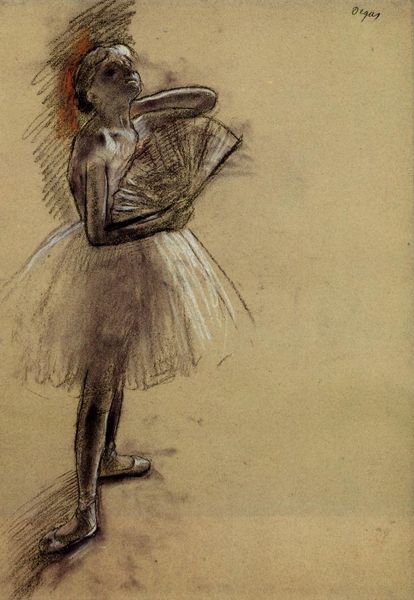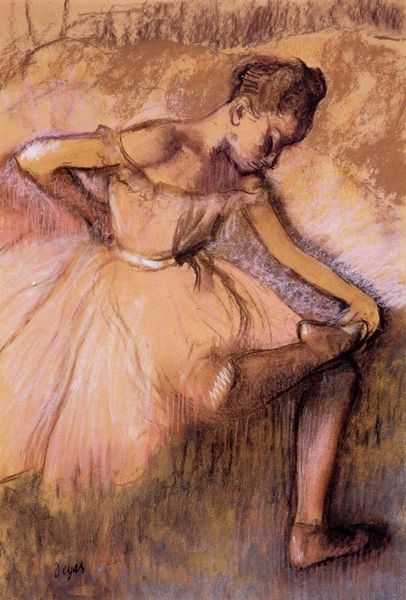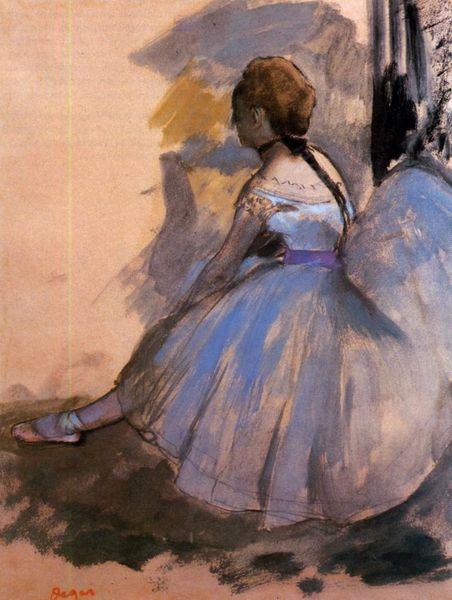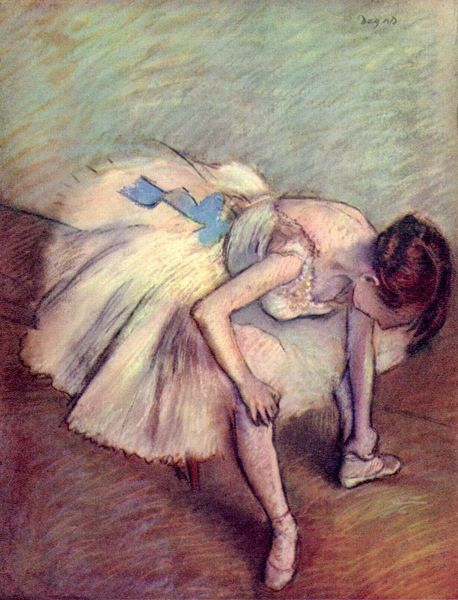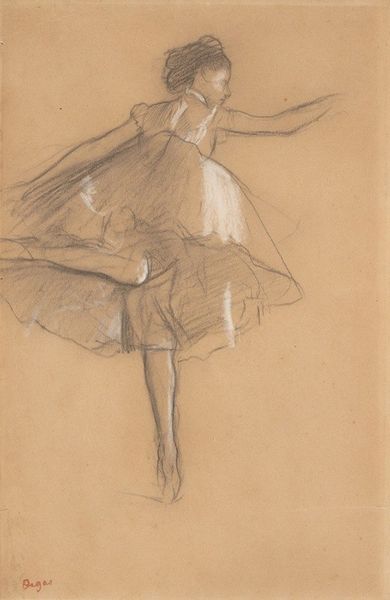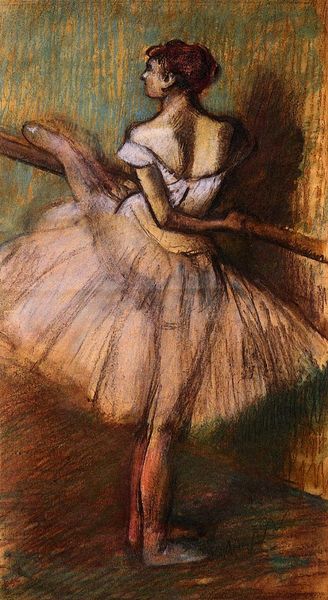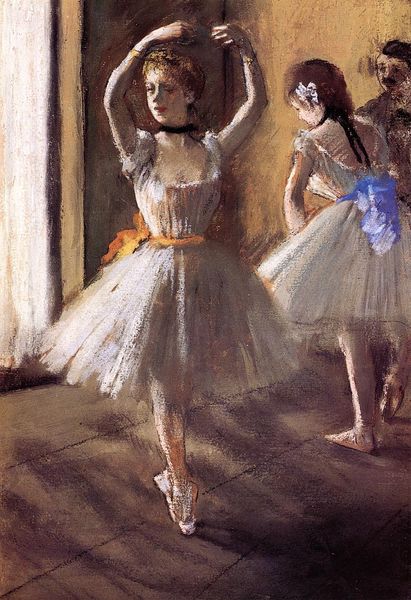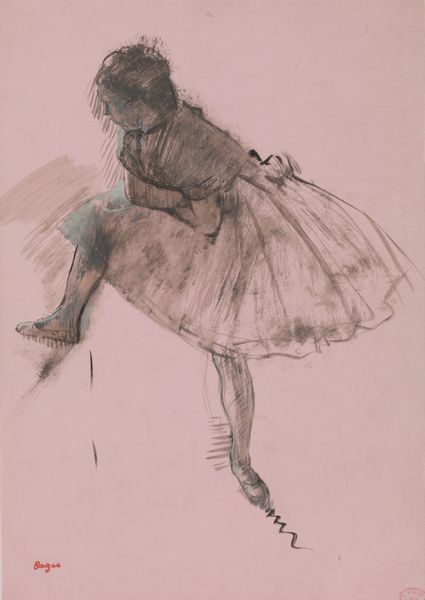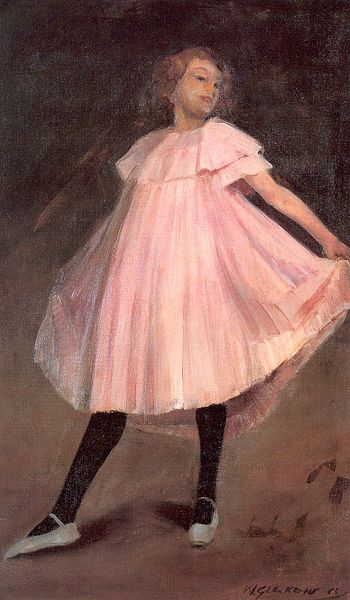
plein-air, watercolor
#
portrait
#
impressionism
#
plein-air
#
figuration
#
oil painting
#
watercolor
#
costume
#
watercolor
Copyright: Public domain
Curator: Take a moment to observe Degas' "Dancer Standing (study)," completed around 1872. It's rendered primarily in watercolor and gouache. My first thought is, it has a very tentative, ethereal quality. What stands out to you? Editor: The young dancer strikes me immediately. Degas really captures a fleeting moment of poise— but, looking closer, I also see vulnerability and the pressures imposed upon women in these roles within that era's rigid social structure. The way she's partially hidden, almost erased by the shadow, amplifies those implications. Curator: Interesting perspective. I tend to focus on Degas' methods: his almost obsessive study of dancers. It's about production; examining the physical labor, the constant repetition that goes into achieving this… fleeting illusion. He captured their world in such a complex way using mass-produced materials, gouache and watercolor, which democratized the image and opened this world for broader consumption. Editor: Precisely. The democratization wasn't only of images, but speaks directly to a class system as well. It shows how labor and art became entangled for the sake of upper-class entertainments and their leisure activities. I keep seeing her constrained silhouette against the blurred strokes – it hints at the psychological confines placed upon these young ballerinas. Curator: The limited palette speaks volumes about availability and artistic choice, impacting the artwork itself. Was the dancer wearing white at the time or was that the available material to the maker for the sketch? It draws my attention to how these constraints shape both production and ultimately the reception of art in the market. Editor: You're prompting a valuable consideration of artistic resources meeting societal pressures. Degas doesn't seem to just present pretty pictures of dancers but provokes thoughts of class division and expectation. Curator: I'm left with this feeling about Degas' persistent interrogation of movement through repetitive motion. Editor: Ultimately, it highlights the social and material pressures inherent in ballet, questioning historical ideas around femininity and labor in the arts.
Comments
No comments
Be the first to comment and join the conversation on the ultimate creative platform.
